This was published 6 years ago
Recycling old planes: Where you can buy old plane seats and other parts
By Michael Gebicki
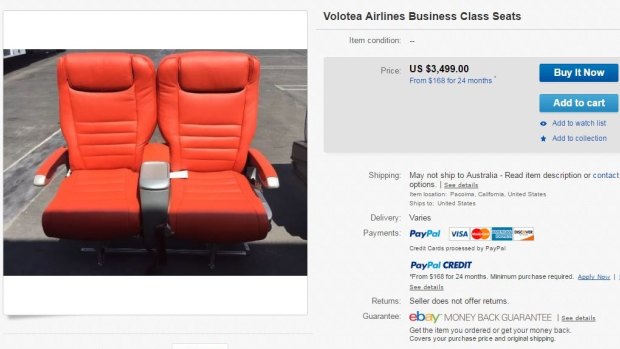
For buyers with deep pockets: A set of old Volotea Airlines business class seats.Credit: ebay
Fancy a leather business class aircraft seat, yours for $US450 ($A611)? Perhaps accompanied by a galley cart from a Boeing 747, a mere $US185? Or maybe a top-of-the-line pair of Skyline Recaro first class seats, perfect for TV viewing with your bestie, with motorised seat controls, service trays and even a lifejacket under the seat, but no drop-down oxygen masks.
Something more impressive? How about a fully operational General Electric CF6 jet engine, once used to power a McDonnell Douglas DC-10 aircraft. Delivery in Istanbul, and you'll need to haggle over the price.
When commercial aircraft reach the end of their working life they aren't just shuffled off to a retirement home in the Arizona desert or squeezed to death in giant industrial compactors. Aircraft recycling is the process of harvesting parts and materials from end-of-life aircraft, and there are specialist recyclers around the world that do nothing but buy and break decommissioned aircraft, selling off components until all that remains is a bare carcass in a process known as value extraction.
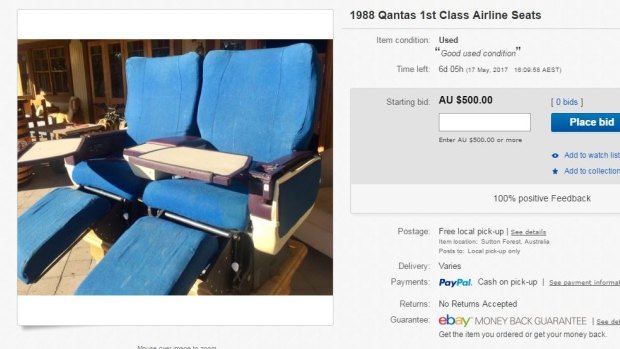
A 1988 Qantas first class airline seat for sale.Credit: ebay
The aviation industry has become a willing partner, prioritising reuse and recycling in the design of new aircraft. In the case of an older model Boeing 747, up to 50 per cent can be recycled. If it's a newer Airbus A320, all but about 5 per cent of its components can be reused. There's even a trade organisation, the Aircraft Fleet Recycling Association, devoted to the promotion of best environmental practice in the reuse of aircraft parts and materials.
See also: Aircraft graveyards: What happens to old planes?
Easily removed components such as galley carts, overhead bins and seats are the first to go. The fire retardant properties of aircraft seats break down after a while which renders them unsafe and illegal for further use in aircraft. Many will end up on ebay before they find retirement in a lounge room, or possibly a man cave, although some are repurposed in more creative ways. Seats from superseded Finnair aircraft have ended up as passenger seating in Finnish Red Cross vehicles.
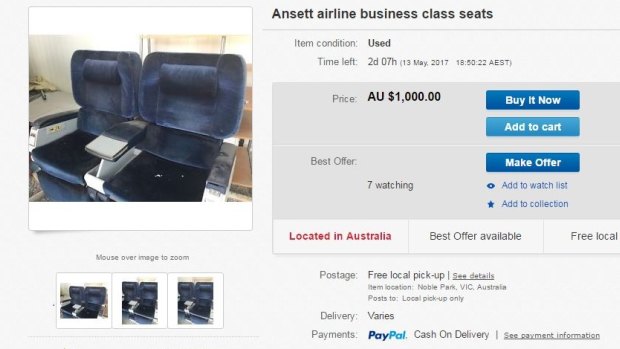
Remember Ansett? You can grab seats from the former airline for $1000.Credit: ebay
Next, the airframe is comprehensively stripped of avionics, electronics, engines and every other removable component. While you might buy an illuminating "fasten seatbelt" sign or a trio of economy class seats on the cheap some items from the aircraft recycling catalogue are far more valuable. A second-hand landing gear for a Boeing 747 might fetch $US300,000. A recent model jet engine in good condition with full documentation is worth millions to the right buyer. Some will be rented out, asking price around $US20,000 per month.
More likely however, these big ticket items are worth even more broken down and sold as parts to satisfy a robust industry demand for components that must be replaced at specified service intervals. In some cases an individual component might see service in dozens of different aircraft before it reaches the end of its working life.
While some airlines sell their end-of-life aircraft to a recycler or simply hand them back to the leasing operation that owns them, some take a more hands-on and creative approach.
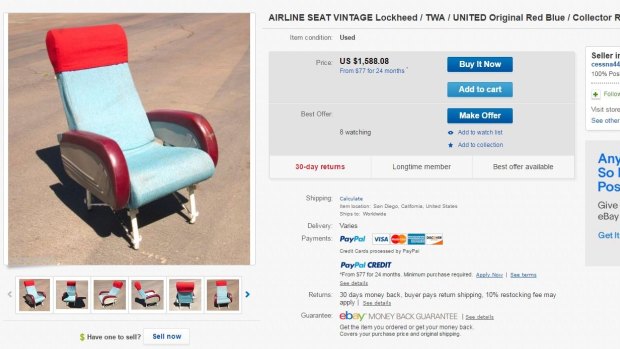
If vintage is more your style, how about this retro United plane seat?Credit: ebay
When US carrier Southwest Airlines redesigned its 737 cabin interiors, the airline ended up with 80,000 leather seat covers. After some head scratching the airline launched Luv Seat, which partnered with NGOs in Africa. The bulk of the leather went to SOS Children's Villages Kenya, which provides apprenticeships and training to orphans, who used the leather to make soccer balls and shoes.
See also: Why do airlines close the blinds on daylight flights?
Finnair uses its old uniforms to mop up oil spills, blankets are shipped to refugee camps in Myanmar and clothing and furniture go to special needs' workshops.
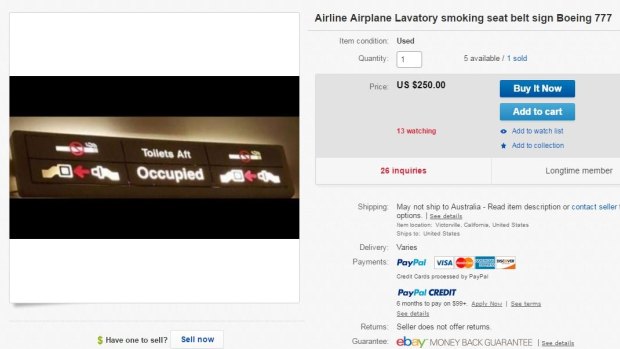
Not into plane seats, well how about an old Boeing 777 lavatory smoking sign?Credit: ebay
Another outstanding example is Air France-KLM, which topped the Dow Jones Sustainability Indices in the transportation category for 11 years in a row until 2016.
Old Air France uniforms have been turned into car insulation, plastic meal trays have become cutlery, cables from inflight entertainment system given new life in other electronic devices. When KLM redesigned its cabin crew uniforms, the carrier had the surplus fabric woven into carpets that lined the business class cabin in the airline's new 747-400 fleet.
According to Sophie Virapin, Air France's vice president of sustainable development, 80 per cent of the airlines' on-board material is recycled and reused. In one case, Virapin teamed up with Bilum, the creation of former advertising executive Helene de La Moureyre, which makes beach bags, totes, iPad cases and cabin bags from rebirthed advertising banners, flags and sails. Under the Recycled Air France program, Bilum transformed retired Air France lifejackets into an eye-catching array of bags and passport holders.
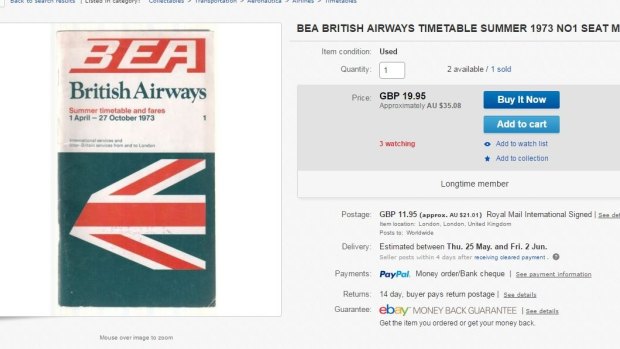
Before SeatGuru: An old British Airways timetable 1973 seat map.Credit: ebay
In the process of deconstruction, aircraft can yield some unexpected surprises, including lost phones, coins, wallets and even passports.
According to Mark Gregory, founder and CEO of Air Salvage international, a major UK-based aircraft recycler, what his engineering team found when they tore out an aircraft toilet was far from ordinary - a $US4 million bag of cocaine, worth even more than the aircraft itself.
Finally, when everything has been stripped out of an aircraft the carcass is shredded, sold to a metal recycler and, in most cases, melted down and returned to the supply chain in a whole new form. Next time you sip a beverage from an aluminium can, consider that it might once have been around the world hundreds of times, galloping across the planet at 10,000 metres at the rate of one kilometre every five seconds, a tiny part in a modern miracle.
See also: 10 things on an aircraft you never knew about
See also: What it was like when you could smoke on board a plane
Sign up for the Traveller newsletter
The latest travel news, tips and inspiration delivered to your inbox. Sign up now.